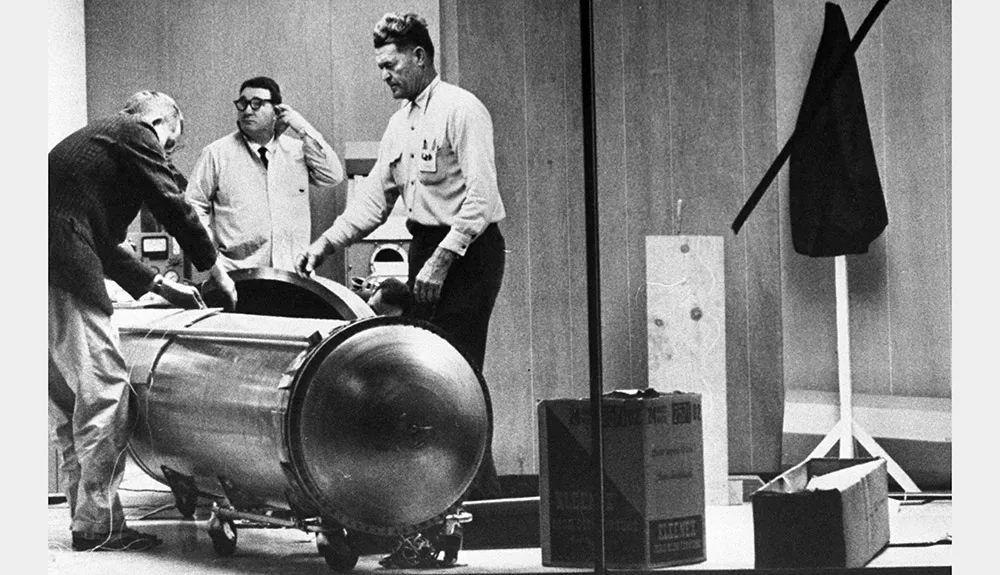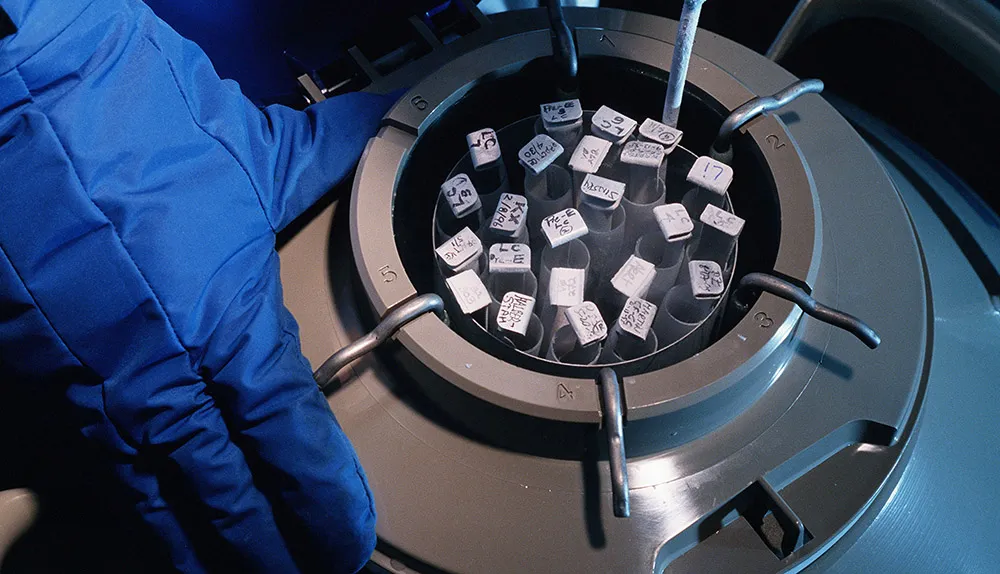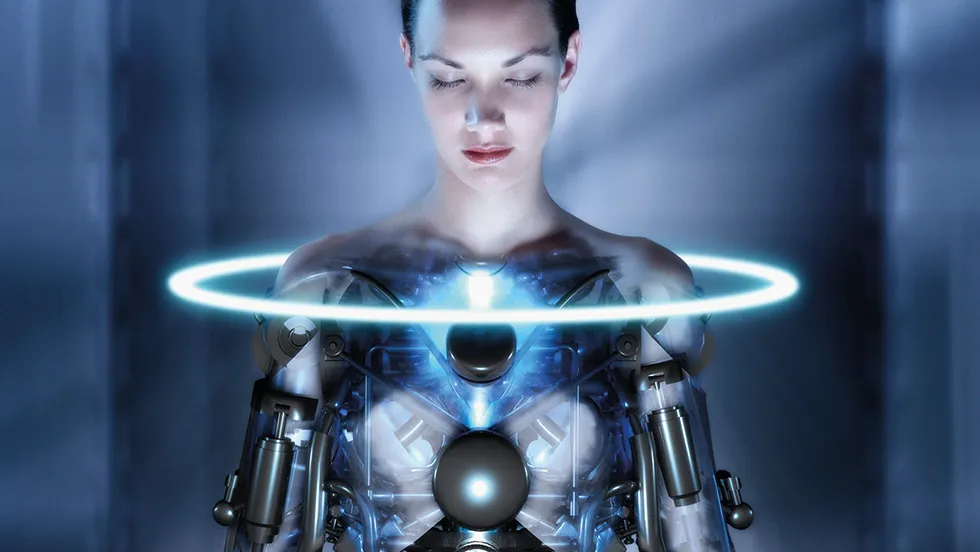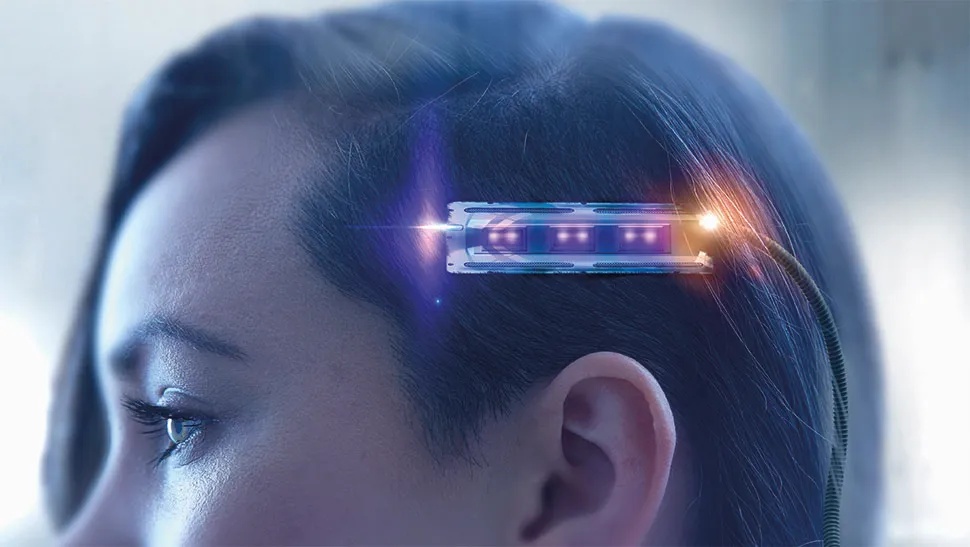For centuries, the world’s physicists, writers and philosophers have argued over whether time travel is possible, with most coming to the conclusion that it’s never going to happen.
But on an 800-acre plot of land just outside the small town of Comfort, Texas, a group of architects, engineers and scientists are building a ‘Timeship’ that they say could transport tens of thousands of individuals to a far-distant future.
Their approach does not involve the use of flux capacitors, or zooming at light-speed through black holes.
Instead, the Timeship aims to store people at such low temperatures that their bodies are preserved for a future civilisation to reanimate them, a concept known as cryonics.
Read more about cryonics:
“Just as a spaceship allows people to move through space, Timeship will allow people to travel to another time in the future,” explains Stephen Valentine, who is the director and principal architect of the Timeship project.
Valentine has been given a multimillion-dollar budget from anonymous donors to develop a ‘Mecca’ for cryonics and life extension.
As well as a fortress-like building that can store frozen people, Timeship plans to store other precious biological samples such as organs, stem cells, embryos, and even the DNA of rare or threatened species.
The site will also house the world’s largest life extension research centre, the Stasis Research Park.

The entire facility will be off-grid, using wind and solar energy to avoid potential power outages, and the location has been carefully chosen to be far from earthquakes, tornadoes, snowstorms and any other turmoil the world might throw at it in the next few hundred years.
“You don’t want to be near a military base or nuclear plant either,” says Valentine, who speaks at a frantic pace with a theatrical Boston drawl.
He spent five years finding and designing the site, while studying pyramids, ancient tombs, bank vaults and medieval fortresses – “anything that has stood the test of time.” He has even consulted experts on how to protect frozen time-travellers from the effects of a nearby two-megaton nuclear bomb.
The resulting design is an epic spaceship-castle hybrid, with thick, low, circular walls surrounding a central tomb-like chamber, where thousands of storage pods will be held under high security.
The exact technique that will be used to cool the bodies is not yet clear, but it is likely to involve the bodily fluids being drained and replaced with a solution that helps protect tissue from the formation of ice crystals.
The storage pods will use the cooling power of liquid nitrogen to keep the bodies at around -130°C, and should be able to maintain low temperatures without power or human maintenance for up to six months, says Valentine.
He hopes to start testing the first prototype pods next year.
How do you freeze people?
The idea of freezing people in the hope of reawakening them is not new.
In January 1967, cancer patient James Bedford became the first person to be cryogenically frozen, and his body remains in cold storage to this day, in a capsule designed by American wigmaker and cryopioneer Edward Hope.
Various organisations and companies have offered similar services over the past decades, often using hopelessly crude freezing techniques or failing to store the bodies properly.

Today, the cryogenic freezing of human stem cells, sperm, eggs, embryos and other small tissue samples is a routine part of scientific research and reproductive medicine in many countries.
Vitrification, a process that turns samples into a glass-like state rather than ice, was developed in the early 2000s as a way of overcoming the problems of ice formation in and around cells. Ice formation is an issue because it can cause dramatic differences in concentration inside and outside the cell, sucking water out and destroying it.
In late 2002 and early 2003, a team led by vitrification pioneer Gregory Fahy used a cocktail of antifreezes and chemicals to cryopreserve a whole rabbit kidney. The organ appeared to function normally after it was thawed and transplanted back into its donor.
Several other breakthroughs have encouraged Valentine, and the wealthy entrepreneurs backing Timeship, that freezing a person properly is now feasible. In 2015, a team from the company 21st Century Medicine claimed to have developed a new vitrification technique that preserved pig and rabbit brains without any visible damage.

That same year, scientists from Alcor, a company associated with Timeship, found that when microscopic worms were deep-frozen and thawed, they not only survived but could ‘remember’ associations they had learnt before they were frozen.
For Valentine and the cryonics community, these studies are proof that if the most advanced scientific techniques are used, then human organs, brains, and even memories and personalities could survive being frozen.
However, cryonics is unique in that it is utterly reliant on technology that does not exist yet. Even if so-called ‘patients’ are frozen perfectly after death, they are simply guessing that scientists will one day be able to reanimate them and cure their illnesses – and will want to.
Prof Brian Grout, chairman of the Society for Low-Temperature Biology, says that cryonics has become more credible in recent years, and that it would be “wrong to dismiss the idea of whole-body freezing.”
Read more about extending life:
But he does have one big problem with the central idea of the Timeship mission: the preservation of dead bodies.
“The biggest difficulty is not whether it is possible to recover a whole person from ultra-low temperatures – there is a reasonable chance that will happen in the future. It is the fact that they will be dead. If they were dead when they were frozen, they will still very much be dead when you thaw them out.”

Frozen in time
Freezing people alive could mean they can be placed in suspended animation for, say, long-term space flights, says Grout.
Technology that may be able to cure what are now incurable illnesses is also not hard to imagine, he says, but overcoming death is another matter.
“The technology they will need is not cryotechnology, it’s reversing death. That’s a pretty big leap for me.”
Valentine refuses to be drawn into a debate on whether Timeship would accept living patients if the authorities allowed such a thing, saying that it is a matter for the medical and legal professions.
But he and others believe that various technologies such as gene editing and nanotechnology could one day change how we perceive death, and reverse it.
Other futurists believe that it may one day be possible to upload our minds onto a computer, freeing humanity from the restraints of a physical form entirely.
Read more about death:
- Death is part of life, and there is a lot we can learn from it
- To death and back: what near-death experiences could tell us about dying
Banking on these future technologies may seem like a pretty big gamble, especially when the costs of cryonic preservation start at around $30,000. Yet for people whose lives are cut short by illness, a miraculous breakthrough may literally be the only hope they have.
An example is the14-year-old British girl known as JS who made global headlinesin 2016 after writing, before she died of cancer, that shewanted to be frozen. A judge ruled that her wishes must be respected, and her body was sent to the US to be frozen.
She wrote: “I’m only 14 years old and I don’t want to die, but I know I am going to. I think being cryopreserved gives me a chance to be cured and woken up, even in hundreds of years’ time.”
What happens when you are unfrozen?
What the world will look like in hundreds of years’ time is anyone’s guess, but there are many logistical challenges for anyone is woken from the dead.
For a start, all your money, friends and family would be long gone, and you’d probably struggle to find work in whatever hyper-advanced society has managed to resurrect you.
And there are bigger questions about how the planet would cope with a human population living far longer than it does now.
“We are not going to have to worry about all that right now,” says Valentine, frustrated by questions he sees as pointless hypothesising. “The world may have changed in ways we can’t even imagine! We could be inhabiting other planets or have modified ourselves to live in other environments.”

It’s certainly hard to dismiss these ideas completely, given the remarkable progress our species has made in just the last few decades. And Valentine is confident that a change of mindset is just round the corner.
“If scientists one day freeze a rabbit and bring it back to life, then the idea will spread so fast. People will start to think: ‘why am I being buried in the ground? Why am I being cremated? I’ll get frozen, and then one day, who knows.’ There could be many of these places around the world. This might become the norm.”
Valentine himself is not currently signed up to be frozen at the Timeship – he says it would distract from his architectural mission and could look like he was designing “some kind of monument for myself.” But his excitement and enthusiasm for this ambitious project is clear.
Will the travellers in the Timeship find themselves alive and well in the future, freed from the limitations of today’s medical science? Or is it an expensive folly, doomed to result in several thousand bodies denied a proper burial?
There’s really only one way to find out – and it involves a very long, very cold wait.
- This article first appeared in issue 303 of BBC Focus Magazine–find out how to subscribe here
Five ways you could live forever
1
Upload your consciousness to a computer

Some believe that we may one day be able to recreate every detail of our brains on powerful computers, enabling our thoughts and experiences to live on without physical bodies. However, neuroscientists still struggle to simulate the workings of the most primitive animal brains, so it remains a distant prospect.
Read more about cryonics and life extension:
- Cryonics: could you live forever?
- The history of cryonics: a timeline
- The immortalists - can science defeat death?
2
Hibernate

Doctors sometimes lower the body temperature of patients dying from severe injuries to buy more time while they perform emergency surgery.
Lowering the body’s temperature from 37°C to around 10°C slows down all biological processes, resulting in a kind of ‘induced hibernation’.
A similar technique has been proposed as a way of putting long-distance astronauts into a deep sleep.
3
Build a new body for yourself
Become a vampire

After research in mice showed that the blood of young animals helped old animals’ memory, endurance and tissue repair, trials have begun to see if blood transfusions from young people can reduce or reverse ageing in older humans, too.
Scientists hope to identify the blood-borne chemical components of ageing.
4
Travel through time

If it was possible for a person to travel at very close to the speed of light, then time would slow down for them relative to everyone else.
This means that when they return to Earth, thousands of years may have flown by. However, unlike in Back To The Future, there would be no way back to the past.